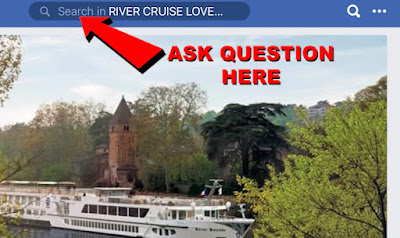Travel and Leisure
Louis Pasteur once said, "Chance favours the prepared mind". Ok, what he actually said was, "In the fields of observation chance only favours the prepared mind", but I like the simplified version better. I often come back to this quote because I'm a bit of a worrywart; sometimes, when something crosses my mind, I tend to dwell on it, and if it's late at night, it even keeps me awake.We are about two months away from our first European trip since the pandemic started. The river cruise that I've been wanting to try came up on a sale last summer, and we thought with the vaccines in full deployment, that surely things would be good by the beginning of fall 2022, right? So we pulled the trigger on the Enchantment of Eastern Europe cruise, and have planned for a week in Croatia beforehand. But then the Omicron variants appeared, and new concerns arose about how long the vaccine effectiveness would last, and whether we'd be in for a fourth, fifth and sixth wave of Covid-19. And then when we started to see the light with respect to the severity of Omicon, and countries started to lift measures, all of a sudden - BAM! Russia invades Ukraine! So I watch every newscast about war, and monitor the effect it is having on tourism in Eastern Europe's neighbouring countries; surprisingly, it hasn't been too detrimental, at least to the places we will be travelling to. But all of the things mentioned above are way beyond our control, so they didn't wander too far into my field of worry. However, there are things that are happening that can and should be prepared for, in order to improve the chances of an enjoyable trip. I'm not talking about booking hotels or Airbnbs in advance, so you're not left out in the cold, or planning ahead and booking your rental car at the best rate. And you probably don't need to book your rail tickets too far in advance, but prime TGV rates are usually best booked at four months out. No, I mean taking steps within your control that will remove or lessen the burden once you arrive at your destination. A simple example is all of the issues flyers are currently having with lost or delayed baggage; while it's not easy for some to pack efficiently for a two-week trip, going with carry-on luggage would ensure that you are well prepared for that potential dilemma.So what else can we prepare for that might be an issue? Lineups at the airport can't always be avoided, and certainly you'd want to show up early to make sure you don't miss your flight. But there are programs that allow you to take the fast track through things like security screening and sometimes customs checks; e.g. Nexus, Global Entry and TSA Precheck. While these might seem like a hassle to get, they are very beneficial when you can bypass that endless security lineup that snakes out into the airport concourse. Another thing that can help you at passport checkpoints, is the e-passport, or biometric feature that almost everyone has now. The tiny chip embedded inside contains information that is used to identify the passport holder, and is readable by Near Field Technology (NFT). This is the same kind of thing that you are using when you pay with your Apple iPhone, or tap your VISA card. Instead of queueing up at the customs and immigration lineup, look for a row of kiosks or a separate one indicated by the symbol that matches the one on the front of your passport. Simply insert your passport into the reader, then a photo is taken, and you're off to get a stamp from the customs official.Another thing that I like to prepare for well in advance, is seat selection on our flights, especially the long haul ones. As I had written about in my avoiding travel mistakes post, I didn't do this on a long trip from Frankfurt to Harare, and ended up in the rear bulkhead, sandwiched between two large German men. Now, I make sure that I book our seats pretty much right after I've secured the reservation, and will look for the best options for us on SeatGuru. In fact, I'll even make flight or airline choices based on the type of aircraft offered, as some trans-Atlantic flights might not be in a wide-body jet.
But what about catching your connecting flight and navigating in a foreign airport? Sometimes with a short layover time, you might want to prepare yourself for what to expect when you land at the hub airport. The in-flight magazine located in your seat pouch usually has airport terminal maps, but you can do much better by Googling the airport beforehand. In my case, someone had recorded a video on what you will experience transiting from Munich's Terminal 2 satellite to Terminal 2. And while doing my Google search for info on the Munich airport, I came across a link for an app called Passngr. It's a German portal for all things flight-related, and can give you insight into flight arrival and departure info, show you where to find food and drink, shopping and other services, as well as link you to wait times at various passport control points. As an added bonus, it enables you to use the free WiFi services at the airports, which would of course would be needed to look up the previous information.
But what about catching your connecting flight and navigating in a foreign airport? Sometimes with a short layover time, you might want to prepare yourself for what to expect when you land at the hub airport. The in-flight magazine located in your seat pouch usually has airport terminal maps, but you can do much better by Googling the airport beforehand. In my case, someone had recorded a video on what you will experience transiting from Munich's Terminal 2 satellite to Terminal 2. And while doing my Google search for info on the Munich airport, I came across a link for an app called Passngr. It's a German portal for all things flight-related, and can give you insight into flight arrival and departure info, show you where to find food and drink, shopping and other services, as well as link you to wait times at various passport control points. As an added bonus, it enables you to use the free WiFi services at the airports, which would of course would be needed to look up the previous information.
So you've arrived at your destination... what now? How have you planned to get to your hotel or Airbnb? Because I'm so cheap, we often take the train/metro from the airport to our lodging, and walk the last 5-10 mins of the way. But many metro stations have two exits, and if you take the wrong one, you'll end up heading in the wrong direction. That's why I like to prepare in advance, and have a look at Google street view, as to what things should look like when we exit the station. You might think this is overkill, but you don't want to know the number of times that this has tripped us up, and we ended up walking 10 mins in the wrong direction!
Another thing to be prepared for once you arrive, is how to avoid the lineups at popular things to do. When we were less skilled European visitors, we didn't think to book museums or other tourist highlights ahead of time, and spent valuable day touring time standing in line. Most of the top attractions allow for online booking ahead of time, and it is usually cheaper to do so as well. Also, some will limit the total number of ticket sales, so you might not even get in, even with waiting in line. What's the risk? Well of course, you might end up changing your plans, and your pre-purchased entry tickets to Plitvice Lakes National Park go unused; but at only $50, you're not taking a huge financial leap of faith.
My final bit of advice regarding being prepared for your trip, is making sure you've downloaded the apps and data that you need for your vacation ahead of time. You never know if the Wi-Fi at the hotel or Airbnb is going to be dodgy, and things we take for granted like Google Maps navigation may not work well if you haven't downloaded an offline copy of the map data. More on using your mobile phone in Europe can be found in a more detailed post here.







.jpeg)








